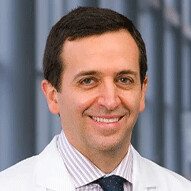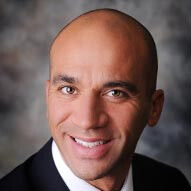Pediatric cavernous malformations
The Center for Cerebrovascular Disorders at Children's Health℠ offers children and parents a collaborative group of experts that comprehensively diagnose and treat your child’s cerebrovascular disease, such as cavernous malformations (cav·ern·ous - mal·for·ma·tions).
What are pediatric cavernous malformations?
Cavernous malformations, also known as cavernous angiomas, cavernomas or cavernous hemangiomas, are an abnormal tangle of capillaries and small veins. These tangles, or caverns, fill with blood or tissue, resulting in popcorn-like formations. These formations can occur anywhere in the body, but the most serious are those that form in the brain or spinal cord.
The Center for Cerebrovascular Disorders specialists are among the very best in the region at performing the most advanced procedures and therapies for pediatric cerebrovascular disease treatment. Each of our primary team members works solely in the pediatric setting with a clinical interest in disorders of the cerebrovascular system.
This program is the only one of its kind in Texas, and one of a handful across the nation. It offers a unique level of expertise in the management and treatment of patients with aneurysms specific to children and adolescents. We are the only program in Dallas to offer pediatric neurosurgery and neuro-radiology coverage 24 hours a day by specialized, dedicated pediatric providers.
Please email ccdc@childrens.com to schedule an appointment.
What are the signs and symptoms of pediatric cavernous malformations?
The symptoms of a cavernous malformation depend upon the location.
In the brain or spinal cord, the malformation can cause:
How are pediatric cavernous malformations diagnosed?
Cavernous malformations are typically not diagnosed until symptoms appear. To diagnose a cavernous malformation, your child’s doctor will do a detailed physical examination. You will be asked if your child has had any trauma or infection and if there is a family history of bleeding problems.
Additional tests may include:
Computed Tomography (CT) Scan - This test uses X-rays to produce multiple images of the inside of the body. These three-dimensional pictures of the brain can show the cavernous malformation and if there is evidence of a stroke.
MRI with Magnetic Resonance Angiography (MRA) - This procedure uses radiofrequency to create accurate two- and three-dimensional images of the arteries in the neck and brain.
What are the causes of pediatric cavernous malformations?
The exact cause of a cavernous malformation is not well understood, though genetics may play a role.
How are pediatric cavernous malformations treated?
If your child is not experiencing any symptoms from the cavernous malformation, your doctor may want to monitor the condition with routine MRI scans. If treatment is necessary, the type of treatment is determined by your child’s age, symptoms and medical history.
Treatment options include:
Medication to control seizures or prohibit blood clots
Surgery to remove the cavernous malformation
Pediatric cavernous malformations doctors and providers
 Brad Edward Weprin, MDPediatric Neurosurgeon
Brad Edward Weprin, MDPediatric Neurosurgeon Bruno Braga, MDPediatric Neurosurgeon
Bruno Braga, MDPediatric Neurosurgeon Amy Hogge, MDPediatric Anesthesiologist
Amy Hogge, MDPediatric Anesthesiologist Darryl Miles, MDCritical Care Specialist
Darryl Miles, MDCritical Care Specialist G. Pride, MDPediatric Neuroradiologist
G. Pride, MDPediatric Neuroradiologist Lakshmi Raman, MDCritical Care Specialist
Lakshmi Raman, MDCritical Care Specialist Dale Swift, MDPediatric Neurosurgeon
Dale Swift, MDPediatric Neurosurgeon